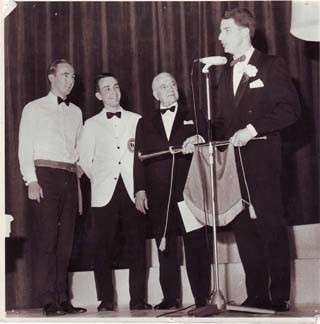
By Neil Earle
On balance, however, for most young and healthy Ambassador students of the first generation, their church’s short-term focus only served to accentuate their commitment to “the Work,” a Work ethic one might say, that went well beyond the traditional work ethic fueled as it was by speculations based on the impending “end of the age.” Recalls Tom Steinbeck, who entered as a Freshman student at the Pasadena campus in 1968: “We were on fire to save and warn a world we thought was soon going to end.” 1

This short-term focus colored much of the campus environment in the 1950s and 1960s. As lively and effervescent as any group of healthy young men and women thrown together for four years of work and study, Ambassador students were not above being human enough to register their own opinions on their strict but close-knit little societies. In-house jokes traveled the underground. “In Pasadena they give you lots of rope,” went one witty aphorism. “In Texas they give you enough rope to hang yourself. In England they burnt the rope factory!” Well, this may have been sacrificing perspective for humor. Lively, in spite of the legalistic tinge, the college continued on its growth trajectory as the 1960s opened. The 1964 Envoy reported on the new $12,000,000 envisioned campus expansion, plans which included a new physical education facility for Pasadena and the capstone, the crown jewel of the enterprise – a new seventy foot high Auditorium complete with reflecting pool to become “the outstanding showpiece of the Southland.” Remarkably, all came to pass according to plan.
Momentum was building. Ambassador freshmen streamed in from other colleges, some 160 of them – Duke, Yale, Harvard, MIT, USC – and streamed out again as graduates into the field ministry to anchor the growth of the church. Pasadena became the center of a hustling, bustling world headquarters. Ambassador students kept busy. A typical student schedule at Bricket Wood, England for the academic year 1969-1970 looked like this:
| Weekly Schedule | ||||||
|---|---|---|---|---|---|---|
| Hours | Sunday | Monday | Tuesday | Wednesday | Thursday | Friday |
| 8-9 | Work | Epistles of Paul | Epistles of Paul | International Relations |
Epistles of Paul | Epistles of Paul |
| 9-10 | Work | World History | International Relations |
World History | World History | Work |
| 10-11 | Work | 3rd Year Bible | 3rd Year Bible | Work | 3rd Year Bible | Work |
| 11-12 | Work | International Relations |
Speech | Work | Forum | Sports |
| 12-1 | noon hour | |||||
| 1-2 | Work | Speech | Sports (Mile Run) |
Work | Speech | Work |
| 2-3 | Work | Work | Work | Work | ||
| 3-4 | Work | Work | Work | |||
| 4-5 | Work | Sports | Chorale | Sports | Chorale | |
| 5-6 | Mile Run | Mile Run | Chorale | Mile Run | Chorale | |
| Evening | CLUB | Work | Mile Run | |||
| Portfolio Class | ||||||
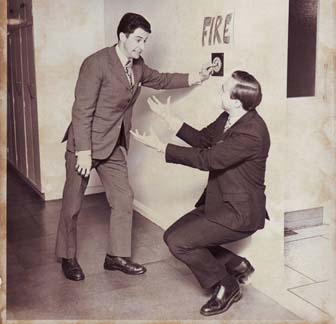
This made for a full week – and purposely so. The campus watchword was “balance,” future leaders needed to learn how to maintain priorities amid a swirl of activities. It was all part of the Ambassador spirit, of training in self-management and self-discipline and goal orientation, of learning to carry “a message to Garcia!”
The strenuous extracurricular round included:
Warts and all, then, by the late 1960’s the three Ambassador college campuses could lay fair claim to being a cosmopolitan, cultural oasis. The addition of three African-American families to the Freshman class of 1965 helped round out what had been a glaring omission, though there were still many mountains to climb in the area of progressive race relations. Still, the opportunities to travel, to interact, to broaden one’s horizons were first rate and fervently encouraged by the faculty.
The case of Marcia (Keith) Fricke, a 1969 transfer student to Bricket Wood from Ambassador, Pasadena is illustrative. Marcia testifies to the “very intimate, family feeling and at all levels” she experienced at the English campus in particular. She was a Bricket Wood student from 1969 to 1972, after spending her freshman year in Pasadena, a not uncommon experience at the time. A native of Chickasha, Oklahoma, Marcia appreciated the travel opportunities Ambassador (UK) afforded. “It opened up a whole new world to me,” she says. “We got to go to Europe two or three times. Then there was the experience of working on the archaeological project in Jerusalem for a summer (see below).” These international contacts were a great boon to Marcia in her many jobs over the years, in particular her years as assistant office manager for MSGRatech, a firm which did business with government and private firms such as AT&T and customers from Israel to Spain. For Marcia, those years at Ambassador were irreplaceable for gaining an insight into other cultures and people.2
Nor was Ambassador’s Big Sandy, Texas campus (begun in 1964) lagging behind in the broadening of horizons. From Big Sandy’s semi-secluded rural base in East Texas, students from all over the United States got to experience a regular series of mind-expanding adventures. Along with the interaction with students from the fifty states there were educational field trips to the NASA Space Center and the Astrodome at Houston, the Carlsbad Caverns, Mexico City and the French Quarter of New Orleans. This was, as mentioned above, part of Herbert Armstrong’s original vision for Ambassador students. “The Ambassador policy is based on the recognition that true education is not of the intellect alone but of the whole personality…not a memorizing of knowledge alone but a thorough training in self-discipline, self-expression, cultural and character development; not book learning only, but broadening travel and experience; not only hearing and learning but doing.”
“Broadening experiences” – a big attraction for Ambassador students in that first generation. Linda Welch, a 1971 Big Sandy graduate, recalls:
It was interesting for me to attend college in Big Sandy because I had grown up in a city. The Big Sandy campus actually had a farm with cows and horses and chickens. Some students worked on the farm and it supplied much of the food we ate. I worked in the kitchen during my freshman year. There was a butcher shop with a full-time butcher, and a bakery with a full-time baker, in addition to the other kitchen employees. 3
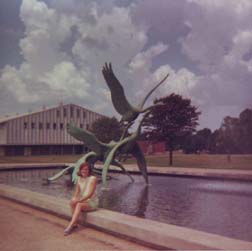
This was especially true of Big Sandy in the 1960’s. As a city girl from Memphis, Tennessee, Linda appreciated the Texas campus’ outdoor emphasis and its 2500 acres which played host in those years to an experimental farm. And how many Top Ten colleges could brag of having their own alligator? “Three of my most unusual dates during my college years had to do with the fact that Ambassador, Big Sandy was a rural campus,” adds Linda Welch. “One was horse-back riding, another was skeet-shooting, and maybe the most unusual date was one with a Czechoslovakian student from Bricket Wood, working at Big Sandy for the summer, who wanted to see the alligator (nicknamed “George”) that lived in the campus sewage treatment reservoir!” Another unique feature of the Big Sandy campus was that it had a lake which featured an annual “beach party.” Water skiing was available in the summer time. “In the late 1960’s the campus also had a nine-hole golf course and an airstrip, convenient for Herbert Armstrong and Garner Ted Armstrong to use when visiting.”
As covered below, it was in these years that the alert outdoorsman Garner Ted Armstrong was leading “The World Tomorrow” program into an early environmental stance, decades ahead of most of the Christian community. The WCG’s Our Polluted Planet booklet debuted in 1968, trenchantly addressing the scriptural blind-spot much of Christianity had adopted towards ecological themes. “Adam was told to ‘dress and keep’ – not pollute and rape and ruin – his surroundings” (Genesis 2:15) the booklet intoned in its conclusion. Editor Herman Hoeh’s green thumb and Garner Ted’s Oregon upbringing nudged the church and college into a “green” direction. Ever the idea-man, Garner Ted envisioned the Texas campus and its farm-based locale as a prototypical experimental community for addressing some of the ecological concerns emerging in this first wave” of the environmental movement. Linda Welch summarizes some of the innovative ideas that were affecting the students:
Garner Ted Armstrong loved the Big Sandy campus. He had a home there on Lake Loma and some of his best friends were faculty members. He loved the outdoors and was interested in the environment. He was instrumental in having a new invention called a “digester” transported across several states to the campus farm. It was a large composting machine which was supposed to manufacture compost from garbage in just a few days. It became the brunt of a lot of jokes because it kept breaking down and never seemed to work as expected. But apparently it worked better than many thought.
“I can’t imagine having enjoyed going to any other college or university as much as I enjoyed going to Ambassador College in Texas,” Linda Welch concludes. “I made many long-time friends and have many happy memories of the time I spent there and the opportunities I had.” With one regret, however. “One thing I regret a little, though, is that one summer airplane flying lessons were offered on campus, but they had a policy of males only – no female students. If it had been offered to girls, I would have jumped at the chance! Maybe I should have protested – respectfully, of course!”4
Herbert Armstrong’s founding vision for the college, promulgated regularly in WCG publications, was attracting a wide range of students to Ambassador’s three campuses – from Vietnam War veterans to former stars of stage and screen. “Few things could be more broadening than an Ambassador education, if one took advantage of the opportunities offered especially for that time period, the 1960’s and 1970’s,” asserts Dr. Karl Moore, now with McGill University’s school of management.5 It was no cliché that students hailed from almost every inhabited continent. This was especially true of the English campus, begun in 1960 twenty miles north of the center of London in the beautiful “Green Belt” area of Hertsfordshire. Bricket Wood’s 1971 freshman class was a good example, particularly for such a small (about 250 students) campus. Countries of origin included the following:
| United States | 23 |
| Australia | 16 |
| Britain | 9 |
| Canada | 3 |
| France | 2 |
| New Zealand | 2 |
| Austria | 1 |
| Holland | 1 |
| Irish Republic | 1 |
| Israel | 1 |
| Ulster | 1 |
Transfer students that year included two from South Africa and two from British Guyana.6 With good reason, the Bricket Wood men’s common room was named “the International Lounge.” Bricket Wood graduated an Iraqi student from Baghdad in 1966 and hosted a Palestinian Arab freshman in 1969-70. This lively commentary from the 1968 Envoy, the college yearbook, captures some of the excitement of arriving at the English campus:
Flight number 100 from New York is now landing on runway 7. Passengers from the United States should be unloaded and check through her Majesty’s Customs in thirty minutes time.” The loudspeaker clicked and the pleasant voice on the public address system died away in the awesome corridors of London International Airport. “That’s them,” one young man smiled at the group accompanying him. “Another crop of Bricket Wood freshmen. Yesterday the Australians and today the Yanks from the Colonies. Let’s go and greet them.”
“The Yanks from the colonies.” This bespeaks the lively camaraderie among Ambassador students. One graduate remembers sharing a dormitory room with two Canadians, two Englishmen, two Americans and two Australians – a sure recipe for challenging or confirming one’s cultural biases, not to mention the fine art of getting along. The robust editorial continued:
Unless you came from Watford or nearby Bricket Wood, even your trip to Ambassador College, United Kingdom, was an exciting adventure. Many First Years have traveled from as far away as Australia – 10,500 miles. And that’s as the crow flies. By boat the journey is 12,000 miles. That’s halfway around the world. And believe me, if some ambitious, inspired bird attempted that flight, he would be a tired crow indeed when he reached the green, misty isles of Robin Hood, King Arthur, Shakespeare, Queen Elizabeth, and Ambassador College. Our students arrive the same way – tired. But the arrival is only the beginning…
The Envoy’s pungent commentary was not exaggerating by much. For most of the approximately 1000 students who studied at Bricket Wood from 1961 to 1974, just getting there was an adventure! Hardly had Freshmen (“First Years” in England) sorted out their luggage than they were plunged into the typical busy Ambassador round. This began with the Faculty Reception – Herbert Armstrong and Loma themselves usually crossed the North Atlantic for that keynote event. Freshman students at the Faculty Reception got to sip punch, enjoy German or Irish or Texas accents and learn to navigate the subtleties of distinguishing an Australian from an English accent. There was usually a chance to chat with the white-haired Chancellor himself. “On the English campus, being smaller, especially in the early years, Mr. Armstrong took an unusual personal interest in each student,” Bricket Wood’s Registrar in the 1960s, Oxfored graduate Dr. David Wainwright, recalls of those years. As he told the student paper The Ambassador Portfolio in its 50th anniversary issue, this initial bonding only accentuated over a four year course of study. The on-campus Ambassador experience played no small part in weaving the expanding WCG together. “It had a large part to play in making one feel at home regardless of geographical location and had a profound impact on the unity one experienced in the church worldwide.”
This was precisely the vision Herbert Armstrong had been hewing to since his and Loma’s “shirttail shoot” to Europe in 1947. Herman Hoeh had always felt that the spirit of Ambassador came close to enshrining the spirit of the early Worldwide Church of God. The unique work-study program whereby students helped finance their education by working twenty or more hours each week on campus stemmed from Ambassador’s staunch Achievement Ethic, an esprit that pervaded each campus. Students at all three campuses were exposed to the writings of HWA’s former mentor, the turn of the nineteenth century popular journalist, Elbert Hubbard. Hubbard’s “Message to Garcia” embodied the virtues of persevering in the face of any and all obstacles. Ambassador’s Chancellor himself radiated in those years the vitality and enthusiasm of American life in the era of Teddy Roosevelt and Henry Ford. David Wainwright summarized the Ambassador spirit in one sentence: “It was a mixture of a willingness to accept challenges, a certain flair or pizzazz in their execution, persistence rather than pushiness, a sense of fun, above all responsiveness, warmth and enthusiasm.”
Right. No-one said you couldn’t have fun on the way while carrying a message to Garcia. There were field trips, movie nights, sing-a-longs galore, senior trips, summer jaunts across the continent if you were a Bricket Woodite and a week-long excursion to Mexico if you were back in the U.S.A. This was a final unifying “perk” offered to each graduating class. There were outreach performances, field trips, private opportunities to explore the world and public choral concerts at which to sing or serve.7
This would become truer than ever after December, 1968 – a good place to temporarily cut the unfolding cord of Ambassador history. On a cold but memorable winter morning, students at the English campus were treated to a memorable piece of Armstrong-initiated drama. In a specially-called student assembly, Herbert Armstrong made the dramatic announcement that he had just returned from Jerusalem in Israel. Because of a special relationship that had developed between Raymond Dick, WCG office manager in Jerusalem, and Dr. Benjamin Mazar of Hebrew University, Ambassador College had been invited to participate in the biggest archaeological project then ongoing in the state of Israel – the Temple Mount Dig in Jerusalem. To top it off, Israel’s Minister of Tourism, Moshe Kol, had announced to the WCG team that it would be advantageous to build an “iron bridge” between Ambassador College and the State of Israel!8
This was news indeed!
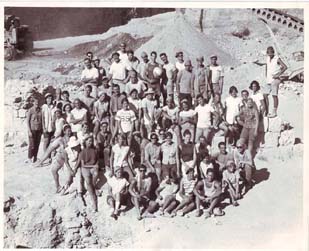 |
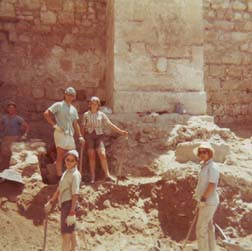 |
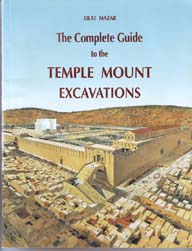 |
| In the shadow of the Temple Mount – Ambassador Diggers, 1970. Click to enlarge (large size). Click here for medium size photo. | Ambassador College Diggers (1970), discoverers of the Vespasian column erected by General Titus after Jerusalem’s fall 1900 years earlier. Click to enlarge. | Reconstructed Jerusalem: Dr. Mazar’s granddaughter has documented Ambassador’s participation. Click to enlarge. |
The excitement in the well-named International Lounge was palpable. A new era in Ambassador’s history was beginning. The “Big Dig” in Jerusalem would represent the first of Ambassador’s formal extended connections with outside institutions and people around the globe, what became eventually known as Overseas Projects. In 1969 approximately fifty students from the three campuses worked under Dr. Benjamin Mazar at the excavation near the City of David in Jerusalem. In 1970, seventy more students followed in the footsteps of these pioneers. For ten years the Temple Mount excavations made Ambassador College and its sprightly Chancellor a well-known name in Israel. And more.9
“It is not book learning young men need nor instruction about this and that but a stiffening of the vertebrae which will cause them to be loyal to a trust, to act promptly, concentrate energies, do the thing – carry the message to Garcia.”
In many ways “A Message to Garcia” can be read now as homage to the distinctive values of Herbert Armstrong’s generation, values that never go completely out of date. Herbert Armstrong’s driving determination and bold zest for life, his high achievement ethic and unquenchable creativity and optimism – these verities were a secular embodiment of the “can-do” spirit of Ambassador and Ambassador students of the time knew it! Ambassador College with its old-fashioned dating rules, study rules, student evaluations and constant mentoring, monitoring and tendency to stereotype people was definitely not for everyone. But down there in the grime and dust of Old Jerusalem the Ambassador spirit shone through. As Robert Cloninger, student leader on the 1970 expedition, explained in a special issue of the Portfolio: “Our Ambassador College training teaches us the benefit of an enthusiastic approach to life. That is what made our summer in Jerusalem such a success.” In the shadow of the famed Temple Mount in Jerusalem Americans, Canadians, Australians, Britishers, French, Jews, Danes, Swiss and Belgians toiled together alongside Israelis and Palestinian Arabs. They made a winning team. They extended the excavated area of the Old City and discovered an inscribed column dedicated to the Emperor Vespasian and his son Titus, conquerors of Jerusalem in 70 AD. With their sweat and pluck and high spirits those diggers built on the foundation laid in 1969, won fame for themselves and their school and set the pace for what would follow in Ambassador’s first formal venture overseas.
Others would follow in their footsteps. Ambassador College Overseas Projects would summon exemplary young men and women from Pasadena to answer the call to service in Sri Lanka, Thailand, Jordan, Syria and even Red China. “If all American students were like you I can see why the United States beat Russia to the moon.” This superb tribute by Dr. Benjamin Mazar to the Diggers of 1970 was a deserved encomium to the spirit of Ambassador. A distressed HWA need not have been worried when Freshman John Beaver met him that day in 1967 on the bench by one of the Pasadena campus’ flowing streams. Based on the Overseas Projects alone, the college was indeed worth all the struggle and effort, so much of which was his. “By the 1970s Ambassador College was on the brink of becoming one of the most distinguished liberal arts colleges on the West Coast,” opines Dr. Michael Germano, a former Dean of Faculty.10 The small minister’s training school Herbert Armstrong had envisioned in Oregon and planted in Pasadena had built up a powerful head of steam.
1 Tom Steinbeck, personal communication,
2 Marcia Keith, personal interview, September, 2004.
3 Linda Welch, private communication, September, 2004.
4 Against such warm remembrances are former student and faculty member O. James Ribb’s criticisms to Joseph Hopkins about Ambassador’s failure to gain accreditation by the 1970’s (The Armstrong Empire, pages 172-173); more recent exposes of Big Sandy from a student vantage point in that troubled decade can be seen in Greg Doudna’s puckish Showdown in Big Sandy: Youthful Creativity Confronts Bureaucratic Inertia at an Unconventional Bible College in East Texas (Bellingham: The Scrollery, 2006). However, many fond memories still survive.
5 Karl Moore, personal interview, February 2007.
6 The Portfolio, Ambassador College (UK), October 1, 1971.
7 The Bricket Wood campus hosted a full-fledged musical concert as a public relations effort each spring at the Watford Town Hall. It often featured such renowned British choirs as the Huddersfield Choir Society in tandem with the Ambassador Chorale. See the brochure, “Elijah,” produced by Ambassador College (UK) Press, 1970.
8 Neil Earle, student notes, December 1968.
9 Eilat Mazar, The Complete Guide to the Temple Mount Excavations (Jerusalem: Old City Press, 2002), page xii.
10 Michael Germano, personal communication, October 2005.